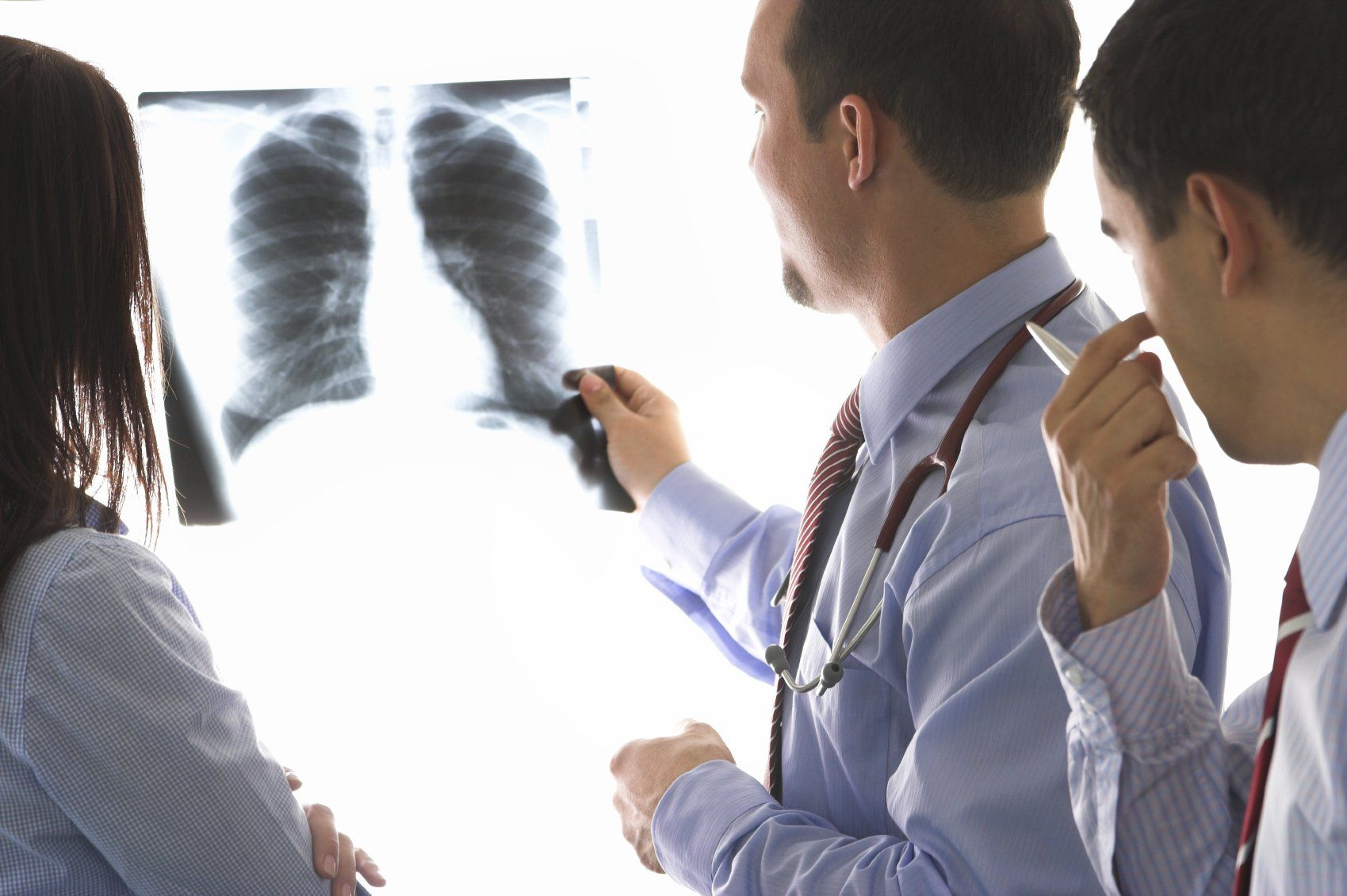Understanding Personal Sampling and Exposure for Licensed Contractors: A Comprehensive Guide
By following the guidelines outlined in this guide, licensed contractors can fulfil their responsibilities and create a safer working environment for all.

Introduction
Asbestos exposure is a critical concern for licensed contractors responsible for asbestos removal. The Control of Asbestos Regulations 2012 (CAR 2012) mandates personal sampling and the compilation of employee health records to ensure compliance and protect workers' health. In this comprehensive guide, we will delve into the intricacies of personal sampling, employee health records, and their significance for licensed contractors. We will explore the purpose, strategies, and requirements for personal sampling, as well as the analysis and review of results. Let's dive in and understand what this means for licensed contractors in layman's terms.
Purpose of Personal Sampling
Licensed Asbestos Removal Contractors (LARCs) understand the need for personal sampling to maintain accurate exposure records. However, recent license renewals and Industry body (ACAD, ACTA & ARCA) audits have highlighted a lack of understanding among an alarming number of LARCs regarding the information required, how to record and use it, and how the "summary of air monitoring" connects to health records. The Health and Safety Executive (HSE) expects a more detailed and structured approach to personal sampling to ensure accurate and useful records. The purpose of personal sampling is first and foremost, to monitor the effectiveness of control measures and employee competence. The lack of understanding among LARCs has subsequently driven the need for more accurate records and compliance with CAR 2012.
Personal Monitoring Policy and Strategy
To effectively conduct personal sampling, LARCs should develop a personal monitoring policy and strategy. HSE publication Asbestos: The Analysts' Guide HSG248 (2021) outlines four types of personal sampling: the 4-hour Control Limit, Specific Short-Duration Activity (SSDA), 10-minute Short-Term Exposure Limit (STEL), and assessment of Respiratory Protective Equipment (RPE). The choice of personal sampling type depends on the aims of the monitoring and the conditions presented by the work.
The aims of monitoring include checking employees' airborne exposure to asbestos, confirming the adequacy of controls including RPE, supporting risk assessments, and establishing employee exposure records. Different requirements can often be met through a single sampling exercise. The conditions presented by the work, such as the duration of the task, the type of asbestos product, quantity, work environment, and the effectiveness of controls, influence the choice of personal sampling strategy. The strategy should cover a full range of work activities, considering the competence and previous results of workers.
Strategies for Monitoring
Monitoring strategies for personal sampling should be similar to strategies for targeting site visits and audits. LARCs should ensure a representative range of work is sampled by focusing on a full range of work activities. For routine jobs, personal sampling should be conducted during actual removal activities where asbestos fibre is most likely to be disturbed and become airborne. As the removal activities are monitored, personal sampling priority should broaden to other stages of the project, including set up, fine cleaning, waste runs, and enclosure dismantling. Initially, resources should be directed towards higher-risk licensed activities rather than sampling Notifiable Non-Licensed Work (NNLW) activities.
It is crucial to monitor all new activities and unusual projects that are anticipated to generate higher or unknown levels of fibre exposure. The frequency of personal sampling should be based on the results obtained, rather than simple percentages for each Asbestos-Containing Material (ACM) which have traditionally been used to structure the personal monitoring strategy. For companies with small workforces, low staff turnover, rare usage of temporary workers, repetitive work, and consistently low previous results, a minimum of one company personal monitoring sample per month is considered reasonable. However, more frequent monitoring may be required for variations in these elements or other triggers specified in the guidance.
Types of Personal Sampling
Let's take a closer look at the four types of personal sampling mentioned earlier:
- 4-hour Control Limit - The 4-hour Control Limit personal sampling aims to check compliance with the Control Limit of 0.1 f/ml over a continuous 4-hour period. It measures the average exposure over the course of a shift rather than focusing on fibre levels for a specific activity. The result is primarily used to compare exposure against the Control Limit and determine compliance. The 4-hour Control Limit personal sampling requires the use of the HSE-approved method, which specifies a specific airflow rate of 1-2 l/min to achieve a minimum volume of 240 litres. The sampling strategy should cover the full shift or as close to it as practicably possible, ensuring it is representative of the work activity or activities undertaken during that period.
- Specific Short-Duration Activity (SSDA) - The SSDA personal sampling is used to measure the fibre level for a specific activity with defined work conditions. It aims to feed into the LARC's database/library of anticipated fibre levels for similar work and check the effectiveness of controls. The SSDA personal sampling requires a sampling duration of at least 30 minutes, and it must meet the WHO criteria, including a flow rate of 1-2 l/min and a minimum volume of 240 litres. The result can be used to confirm the suitability of selected RPE, methodologies, and, when meeting the WHO criteria, calculate the exposure level for comparison with the Control Limit.
- 10-minute Short - Term Exposure Limit (STEL) - The 10-minute STEL personal sampling measures the fibre level for a specific activity over a 10-minute period. It is used to determine if work is licensable when there is doubt, establish the magnitude of peak exposures associated with an activity, and check the adequacy of control measures, including RPE. The sampling duration should be around 10 minutes, and it must achieve a Limit of Quantification (LOQ) of less than 0.6 f/ml to allow for meaningful comparison with the STEL. Sampling should take place at the highest flow rate possible, up to 4 l/min.
- Assessment of Respiratory Protective Equipment (RPE) - The assessment of RPE personal sampling is conducted to measure the airborne fibre level outside the RPE worn by employees. It aims to check whether the Assigned Protection Factor (APF) of the RPE is sufficient to ensure exposure is below the Control Limit (CL) and As Low As Reasonably Practicable (ALARP). This type of sampling helps evaluate the adequacy of the RPE in protecting workers. Flow rates between 0.2 and 4 l/min should be used for this personal sampling type. When undertaking this type of monitoring, the APF of the RPE being worn during the test should be recorded along with the results.
Developing a Personal Monitoring Policy
A well-designed sampling strategy is crucial to maximise the validity of data generated through personal sampling. It ensures reliable conclusions about the risk to workers' health and provides the most value from the sampling exercise. To achieve this, LARCs should develop a Personal Monitoring Policy that outlines the approach to personal sampling. The long-term aim of the policy is to implement a strategy to undertake personal sampling on all employees undertaking all activities, with repeat measurements taken on higher-risk activities or individuals with higher-than-average results for particular activities.
It is important to note that all recorded values should be taken directly from the reported result without applying the APF of the RPE. The APF is only applied when checking if an employee's individual exposure has breached the Control Limit, allowing for work activities that naturally exceed the CL.
Engaging Analysts and Liaising with Clients
LARCs should engage analysts and establish effective communication with client organisations to obtain Personal Monitoring (PM) data and support contract management. Low fibre levels generally indicate good controls by the LARC, but all fibre levels should be interpreted in the context of the removal activity being undertaken. To ensure meaningful personal sampling results, LARCs should clearly specify their requirements to the analytical company, including the type of sampling, expected sampling time, activity to be monitored, anticipated duration, and individuals to be monitored. These arrangements can be discussed with the analyst during the planning stage.
It is important to note that analysts must provide full PM results directly to the LARC as soon as possible after sample collection, regardless of contractual or appointment arrangements. Failure to provide this information may be a breach of the analyst organisation's duty under section 3 of the Health & Safety at Work etc. Act 1974.
Analysis and Review of Results
LARCs are responsible for reviewing all personal monitoring reports on-site and extracting management information from the data. Results should be promptly reviewed and checked against the anticipated fibre level for the activity, which should be clearly defined within the plan of Works (PoW) along with intervention/action levels. Elevated readings typically have two thresholds, each leading to a different action on-site. If the measured exposure level exceeds the protection offered by the RPE, work must cease immediately, and the cause should be thoroughly investigated and rectified before continuing. Management intervention is expected in such cases, along with close monitoring of subsequent work and additional personal monitoring. The employee should also be notified, and their health record should be annotated with details of the measured exposure level.
When the measured exposure level exceeds the level anticipated in the Plan of Work (PoW), the activity should be reviewed and potentially suspended. If the Control Limit is exceeded, work should be suspended, and an investigation should be conducted to determine the cause. Management intervention and additional personal monitoring are necessary in these situations.
Results should be reviewed comprehensively, including a comparison against employees undertaking the same task and against company average values. This allows for observation and recording of work activity during personal monitoring. Management should look for trends over time, such as increasing personal monitoring levels among experienced workers, which may indicate complacency. Any unexpected breaches of the Control Limit should be promptly communicated to employees, safety representatives, and elected representatives of employee health and safety.
Estimation of Exposure
Exposure estimates play a crucial role in risk assessment, producing daily employee exposure records, and developing the Plan of Work (PoW). Reliable exposure estimates can be obtained from personal sampling results of others working alongside the individual or from previous comparable jobs. It is essential to replace typical industry figures with company task average results as soon as possible. However, for novel techniques used for the first time, a "worse case" scenario should be presumed, considering higher RPE selection to account for training, familiarity, experience in using the technique/equipment, and the required control measures.
Employee Exposure Records
Employee exposure records are written, or digital records of personal sampling and air monitoring required by Regulation 19 of CAR 2012. These records should include the minimum information required by the Approved Code of Practice, such as the employer's business name and address, site address (if applicable), date and time of sampling, sample duration and flow rate, type of work being done, type of sample, location of any static sampler, employee's name, task being performed, category of RPE, length of time of exposure, measured fibre concentration, fibre type (if known), names and organisations of the sampler and analyst, and the sampling and analysis method used.
Records can be stored across multiple systems as long as they are retrievable and securely stored in an accessible format for the minimum specified time. Regulation 19 offers the option of keeping a record of each air monitoring exercise or a suitable summary of each record. Health records should be kept for 40 years after the last entry or until the employee reaches the age of 80, whichever is longer. It is acceptable to use spreadsheets or database systems to maintain health records.
Fibre Hours and Health Records
Although there is no requirement to multiply duration and fibre levels to provide a measure of dose in "fibre hours," it can be a useful way to present exposure levels to employees. By adding dose levels over a chosen period, employees can see their weekly, monthly, annual, and total exposures during their employment and compare them against the company average for their role.
For employees under medical surveillance, employers must maintain health records as required by Regulation 22 of CAR 2012. Health records must include exposure records and additional information, such as each employee's personal details, types of work involving asbestos, dates and duration of exposure, exposure levels, details of any RPE used, dates of medical examinations, and a recording and planning system for future examinations. Health records should be kept for 40 years after the last entry or until the employee reaches the age of 80, whichever is longer.
Conclusion
Understanding personal sampling and exposure is crucial for licensed contractors involved in asbestos removal. By developing a comprehensive personal monitoring policy and strategy, engaging analysts effectively, and analysing and reviewing results, licensed contractors can ensure compliance with CAR 2012 and protect the health and safety of their workers. Personal sampling and exposure records play a vital role in monitoring and managing asbestos-related risks, supporting risk assessments, and maintaining accurate health records. By following the guidelines outlined in this guide, licensed contractors can fulfil their responsibilities and create a safer working environment for all.









